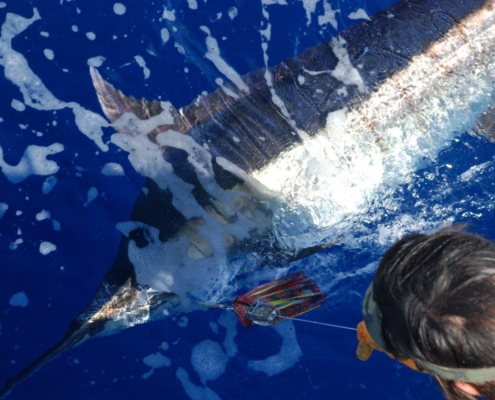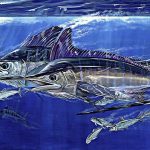Since the Deepwater Horizon oil spill in the Gulf of Mexico on April 20, 2010, a group of federal representatives have continued to assess and develop recovery strategies for injured marine resources. Referred to as The Open Ocean Trustees, their most recent plan is a result of past collaborative work and stakeholder input, which aims to restore those affected resources. This strategic Plan will guide restoration of priority fish and water column invertebrates. Atlantic blue marlin, which are overfished and overfishing is taking place, have been identified as a priority species. (To learn the difference between overfished and overfishing, click here: https://www.fishwatch.gov/sustainable-seafood/faqs/overfishing-vs-overfished-the-same-thing)
The restoration guide will target the following issues:
- Threats to blue marlin
- Restoration opportunities for the species
- Consideration of data gaps
- Characterizing and reducing recreational fishing post-release mortality impacts
- Development of means to reduce uncertainty in restoration, including providing best practices to fishing communities to reduce impacts
- Identification of larval distribution mechanisms, important habitats, and influences on recruitment
Post-release mortality rates for Atlantic blue marlin have also been identified by the agency as an area to further investigate. The National Marine Fisheries Service (NMFS) even raised the possibility of estimating a post-release mortality percentage in recreational fishing by using satellite tags. If this moves forward, it’s likely the agency would include a calculated percentage for Atlantic blue marlin mortality in the recreational fishery, which would be used to reduce the current landing cap of 250 marlins (blue and white together).
To stay up to date on all things billfish and highly migratory species, become a member, subscribe to our monthly newsletter, and follow us on social media, @TheBillfishFoundation.







